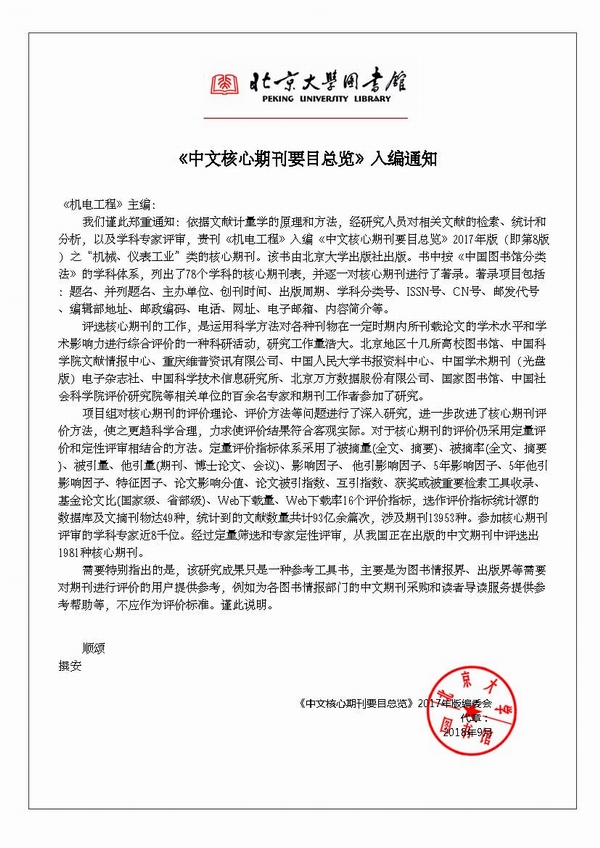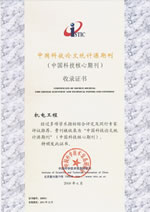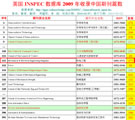
Founded in 1971 >
Chinese Sci-tech Core Periodicals >
British Science Abstracts (SA, INSPEC) Indexed Journals >
United States, Cambridge Scientific Abstract: Technology (CSA: T) Indexed Journals >
United States, Ulrich's Periodicals Directory(UPD)Indexed Journals >
United States, Cambridge Scientific Abstract: Natural Science (CSA: NS) Indexed Journals >
Poland ,Index of Copernicus(IC) Indexed Journals >
International Standard Serial Number:
ISSN 1001-4551
Sponsor:
Zhejiang University;
Zhejiang Machinery and Electrical Group
Edited by:
Editorial of Journal of Mechanical & Electrical Engineering
Chief Editor:
ZHAO Qun
Vice Chief Editor:
TANG ren-zhong,
LUO Xiang-yang
Tel:
86-571-87041360,87239525
Fax:
86-571-87239571
Add:
No.9 Gaoguannong,Daxue Road,Hangzhou,China
P.C:
310009
E-mail:
meem_contribute@163.com
Abstract: Aiming at the problem of uneven distribution of residual stress and poor surface hardness in workpieces caused by low-frequency impact in ordinary rolling processing, simulation and tests research on ultrasonic vibration rolling technology of titanium alloy materials were carried out. Firstly, the kinematic and dynamic characteristics of ultrasonic rolling machining were analyzed from a theoretical perspective, and the relevant factors affecting the performance of ultrasonic rolling machining were identified. Then, the simulation model of titanium alloy material was established using ABAQUS finite element software, and the influence of ultrasonic rolling on residual stress and strengthening mechanism were analyzed. Finally, ultrasonic rolling tests were designed for titanium alloy workpieces to study the effects of different parameter indicators on the machining quality of the workpieces. The simulation model and residual stress results were validated based on the tests results. The research results indicate that with the increase of static load and ultrasonic amplitude, the residual stress distribution on the surface of the workpiece is relatively uniform and tends to be stable. The surface roughness shows a first decreasing and then increasing trend, and the surface hardness gradually decreases with the increase of the strengthening layer depth. When the amplitude is 20μm, the surface quality and performance of the workpiece are relatively preferable. At this time, the average residual stress is 849MPa, and the average surface roughness is 0.1μm. The tests results are consistent with the simulation analysis trend, verifying the reliability of the established model and providing data reference for the selection of rolling manufacturing process parameters.
Key words: difficult-to-machine material; material surface strengthening technology; ultrasonic vibration rolling process; residual stress; surface hardness; surface roughness; ABAQUS








